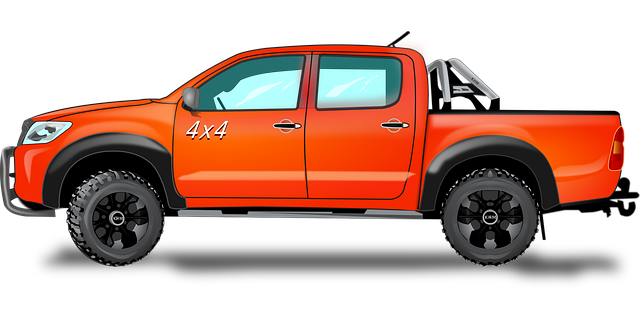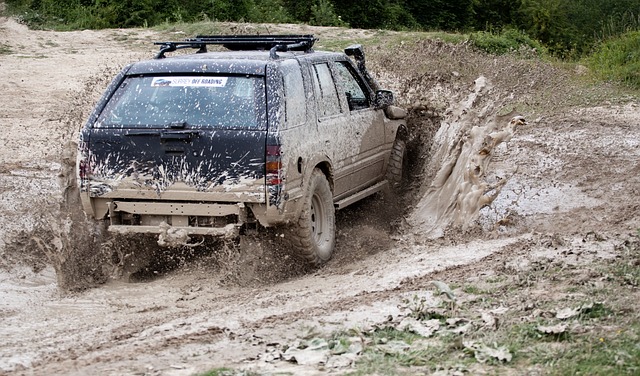Brownsville Truck winches are powerful tools for tackling challenging landscapes. They enhance safety and efficiency in various tasks, from towing to reaching remote areas. Leaf springs, critical components in these winches, influence performance and stability. Regular maintenance is key to preventing wear, corrosion, and misalignment. Future advancements include composite leaf springs and smart suspension systems for improved fuel efficiency and driver safety.
Leaf springs are essential components in vehicle design, particularly for heavy-duty trucks like Brownsville Truck winches. This article explores their critical role in vehicle performance and safety. We’ll dissect the basic structure and types of leaf springs, from solid to coiled, delving into their diverse applications. Additionally, we examine the impact of design on performance, common maintenance issues, and future trends in leaf spring technology for trucks.
- Understanding Leaf Springs: Their Role and Basic Structure
- Types of Leaf Springs: From Solid to Coiled and Their Applications
- Brownsville Truck Winches: How Leaf Springs Facilitate Heavy-Duty Operations
- The Impact of Leaf Spring Design on Vehicle Performance and Safety
- Maintenance and Troubleshooting Common Leaf Spring Issues
- Future Trends in Leaf Spring Technology for Trucks
Understanding Leaf Springs: Their Role and Basic Structure

Leaf springs, an integral component in various vehicles, play a pivotal role in ensuring optimal suspension and handling. These components are designed to absorb shock and transmit force, facilitating a smoother ride and enhancing vehicle control. Their basic structure comprises a coiled or leaf-like arrangement of metal strips, stacked and connected to form a flexible unit. This design allows for deflection under load, providing the necessary give while maintaining structural integrity.
In the context of Brownsville Truck winches, leaf springs are crucial elements that contribute to the overall performance and capability of these powerful machines. By enabling precise control and stability during towing or heavy-duty operations, leaf springs play a direct role in enhancing safety and efficiency. Understanding the role and structure of leaf springs is essential for any individual considering the mechanics behind such vehicles.
Types of Leaf Springs: From Solid to Coiled and Their Applications

Brownsville Truck Winches: How Leaf Springs Facilitate Heavy-Duty Operations

The Impact of Leaf Spring Design on Vehicle Performance and Safety

The design and quality of leaf springs play a significant role in vehicle performance and safety, especially for robust vehicles like Brownsville Truck winches. Optimized leaf spring designs can enhance both the handling dynamics and structural integrity of a vehicle, particularly under extreme conditions or when carrying heavy loads.
Leaf springs act as a critical component in suspension systems, providing the necessary flexibility to absorb shocks and bumps while maintaining control over the vehicle’s motion. A well-engineered leaf spring can contribute to improved ride quality, reduced body roll, and better overall stability, ensuring a safer driving experience. For Brownsville Truck winches, where the focus is on towing and heavy-duty applications, durable and precision-fabricated leaf springs are essential to withstand the additional stress, prevent premature fatigue, and maintain optimal performance over extended periods.
Maintenance and Troubleshooting Common Leaf Spring Issues

Leaf springs, integral components in many vehicles, particularly Brownsville Truck winches, require regular maintenance for optimal performance and longevity. Common issues include wear and tear, corrosion, and misalignment, which can lead to reduced stability, handling problems, and safety hazards. Regular inspections are crucial to identifying these issues early on.
Troubleshooting should commence with a visual examination, checking for any signs of damage, cracks, or loose components. Addressing small problems promptly prevents them from escalating. For instance, lubricating pivots and axes can prevent excessive friction and wear. In case of more severe issues like spring failure, replacement is recommended to ensure the safety and efficiency of the vehicle’s suspension system.
Future Trends in Leaf Spring Technology for Trucks

With advancements in vehicle technology, the future of leaf spring systems for trucks is looking promising. Researchers and manufacturers are exploring innovative materials and designs to enhance performance and safety. One notable trend is the integration of advanced composites, offering lighter weight and improved durability compared to traditional steel springs. These composite leaf springs can significantly boost fuel efficiency and reduce maintenance costs over time.
Additionally, the development of smart suspension systems, equipped with sensors and actuators, is a game-changer for Brownsville Truck winches. Such systems can adapt to real-time road conditions, providing optimal ride comfort and stability. This technology has the potential to revolutionize trucking by improving driver safety and reducing the environmental impact of heavy-duty vehicles.
Leaf springs, integral components in vehicle design, particularly for Brownsville Truck winches, play a pivotal role in performance and safety. From their basic structure to advanced coiled designs, these springs adapt to various applications. Understanding their impact on vehicle dynamics and learning effective maintenance practices ensures optimal performance and longevity. Looking ahead, technological advancements promise exciting innovations for leaf spring technology, shaping the future of heavy-duty transportation.



